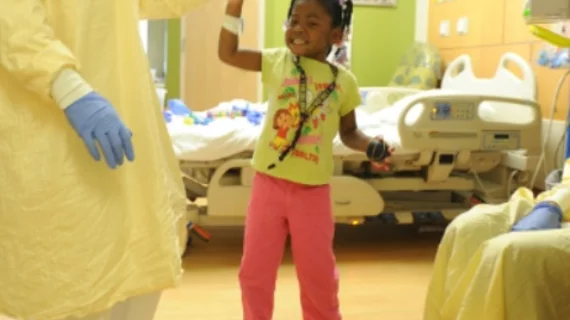Deep learning-based reconstructions can reduce pediatric CT radiation doses while preserving, or even improving, image quality at lower tube voltages, researchers recently shared in the American Journal of Roentgenology.
The current standard for noise reduction on CT scans is iterative reconstruction (IR). Two commonly utilized techniques of IR are hybrid IR (HIR) and model-based IR (MBIR), both of which are used to achieve the same goal of noise reduction. However, both techniques have drawbacks.
“Both HIR and MBIR have limited ability to preserve noise texture, spatial resolution, and low-contrast object detectability at considerably reduced doses,” Yasunori Nagayama, MD, from the department of diagnostic radiology and graduate school of medical sciences at Kumamoto University, and co-authors explained. “MBIR also has long reconstruction times and results in an altered image appearance (specifically, an unnatural, blurred, pixelated appearance), hampering clinical utility relative to HIR.”
Previous studies have touted the benefits of deep learning-based reconstruction (DLR) for dose reduction, but limited research is available on its value in the context of pediatric CT or in low-tube voltage scanning.
To better understand how DLR algorithms could improve radiation doses and image quality in a pediatric setting, researchers compared DLR, HIR and MBIR techniques on the CT scans of 65 pediatric patients (6-years-old and younger). Scans were obtained using lower-dose (80 kVp) and standard-dose (120 kVp) protocols and size-specific dose estimates (SSDE) were calculated for both.
A radiation dose reduction of 54% was observed for the lower-dose group. For that same group, LDR and MBIR both achieved lower image noise and higher signal-to-noise and contrast-to-noise ratios compared to the standard group.
When two radiologists independently rated the noise texture, edge sharpness and overall image quality of the two groups, DLR attained higher scores in the lower-dose group. In contrast, the overall image quality of the MBIR technique was inferior when lower doses were administered.
“Our clinical and phantom image evaluations demonstrated that the application of DLR to low-tube-voltage (80 kVp) pediatric CT allows considerable reduction in image noise without degrading noise texture and image sharpness relative to HIR and MBIR,” the doctors wrote. “The findings may be applied to achieve substantial radiation dose reductions in pediatric CT in comparison with current IR techniques.”
You can view the detailed research in the American Journal of Roentgenology.
More on radiation dose reduction:
Deep learning decreases CT radiation dose by 65% in patients with liver metastases
ACR releases new benchmarks to help radiology departments optimize radiation dose levels
Deep learning image reconstruction decreases radiation dose 43% on coronary CTA scans

